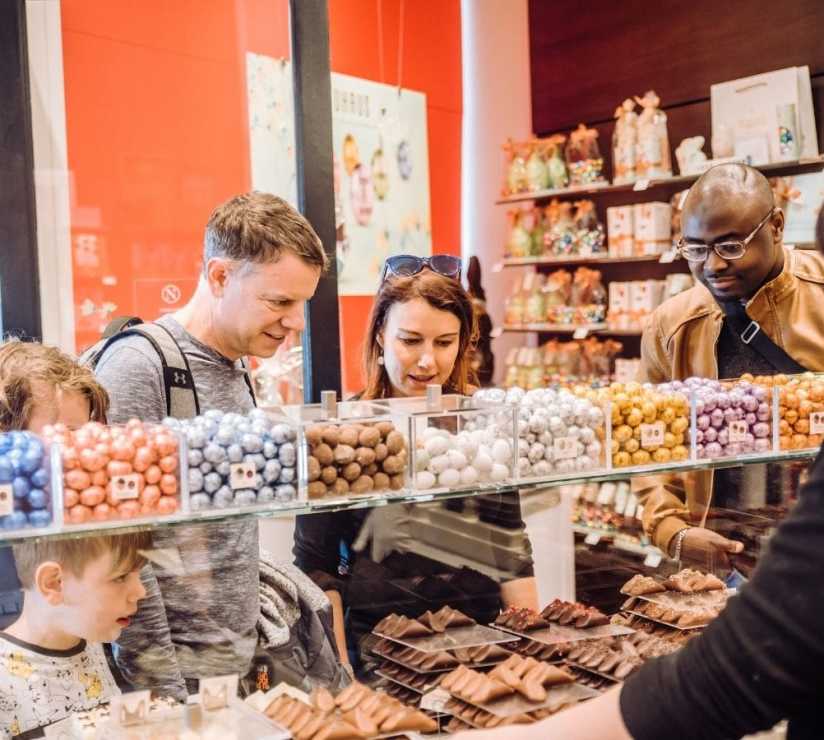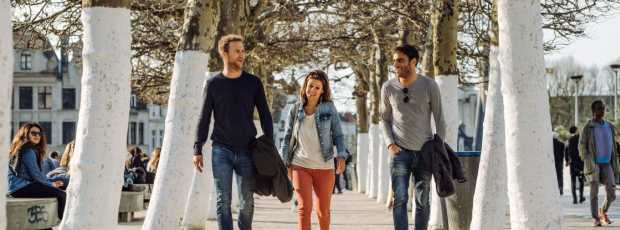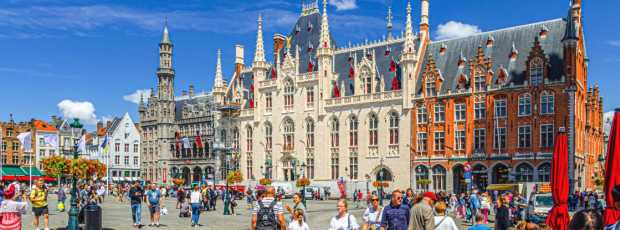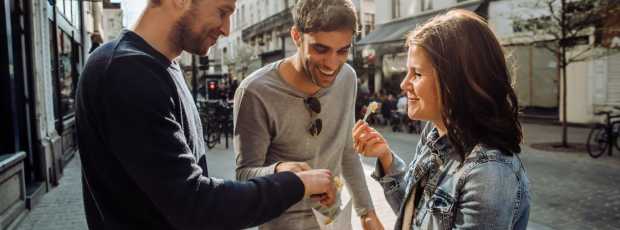Table Of Contents
- Essential Brussels Attractions
- Cultural Treasures: Where Brussels' Soul Lives
- Art Nouveau Wonders: Brussels' Architectural Revolution
- Brussels' Hidden Gems: Beyond the Obvious
- Belgian Flavors: Where Brussels Gets Delicious
- Brussels' European Heart: Where Politics Meets Culture
- Contemporary Culture: Brussels' Modern Scene
- Insider Tips: Local Brussels Experiences
- Seasonal Considerations: When Brussels Shines
- Budget Considerations: Experiencing Brussels Affordably
- Conclusion: Why Brussels Always Surprises
Brussels possesses an effortless charm; it doesn't strive to impress, yet consistently does. While other European capitals meticulously polish their tourist veneer, Belgium's capital remains refreshingly authentic, a place where historic grandeur stands vibrant alongside its role as a dynamic European power, and the warm scent of fresh waffles dances with the inviting aroma of craft beer. After years spent walking its labyrinthine streets, I've learned that the most captivating Brussels attractions are often found in its quiet, unassuming corners.
The city reveals itself in layers. First, there's the obvious beauty of Grand Place the most popular tourist attraction that somehow avoids feeling touristy. Then you discover the art nouveau treasures tucked into residential neighborhoods, the world-class museums that locals visit, and the chocolate shops. When visiting Brussels, you'll find that any itinerary should balance the famous sights with unexpected discoveries. This is Brussels as it really is, complex, surprising, and utterly Belgian.
Check out my places to see in Brussels, whether you're taking a short walk through the Belgian capital, one of the car lovers making a discovery, looking for fruity beers, listing the most beautiful town squares, Brussels Belgium attractions have you covered.
Essential Brussels Attractions
Grand Place (Grote Markt): The Heart of Brussels
Grand Place stands as Brussels' most celebrated attraction, a UNESCO World Heritage site that captures the essence of the city's medieval grandeur. This central square (known as Grote Markt in Flemish), showcases ornate guild houses that tell stories of Brussels' prosperous trading past. The square's vibrant atmosphere changes throughout the day, from morning coffee culture to evening beer terraces.
The Brussels city museum occupies the King's House, (the Belgian king never lived there) where you can trace the square's evolution from medieval marketplace to today's central gathering point. The museum's permanent exhibition includes artifacts from the Brussels World's Fair of 1958, showcasing how the city has evolved as a global destination. The square's real magic happens during the biennial flower carpet event, when local florists transform the cobblestones into a living artwork.
Brussels Town Hall: Gothic Authority
Dominating the Grand Place with its Gothic grandeur, the Brussels Town Hall's spire points skyward, an imposing medieval sentinel. Built in the 15th century, it represents civic pride that predates Belgium's independence by centuries. Inside, guided tours reveal chambers where Brussels' political life has unfolded alongside the nearby Belgian parliament.
The town hall's gothic revival style inspired buildings throughout central Brussels, from the Royal Palace to the stock exchange building, creating the architectural DNA that makes the city center so cohesive.
The Atomium: Brussels' Futuristic Icon
The Atomium stands as Brussels' most unique structure, representing an iron crystal magnified 165 billion times. Built for the 1958 Brussels World's Fair, this architectural marvel offers panoramic city views from its spheres while housing exhibitions about science, design, and Belgian culture. From the observation deck, you can see across Brussels to the historic center, the European Quarter, and beyond to the Belgian countryside.
Brussels sightseeing elevated.
Manneken Pis: Brussels' Beloved Symbol
Manneken Pis, the small bronze statue of a urinating boy, has become Brussels' most recognized symbol despite its modest size. Located near Grand Place, this fountain statue attracts thousands of visitors daily. The statue has a wardrobe which changes, with costumes donated by organizations worldwide, reflecting Brussels' international character. Various legends explain its origins, but Manneken Pis embodies Brussels' attitude toward authority, playful, slightly subversive, and utterly unpretentious.
Royal Palace: Constitutional Monarchy in Action
The Royal Palace sits at the heart of Brussels like a stately reminder of Belgium's constitutional monarchy. While the Belgian royal family doesn't actually live here, this neoclassical complex serves as the official workplace of the King and Queen of Belgium, and also hosts important state functions. During summer months, the palace opens its doors to the public, revealing state rooms that blend 18th-century grandeur with contemporary art installations.
The palace's significance lies in its role as Brussels' ceremonial heart, where state receptions and diplomatic meetings occur, making it a functioning piece of Belgian governance rather than just another tourist attraction.
Cultural Treasures: Where Brussels' Soul Lives
Mont des Arts: Brussels' Cultural Spine
Mont des Arts rises above central Brussels like a cultural acropolis, connecting the upper and lower parts of the city through gardens, museums, and architectural gems. This cultural quarter houses treasures from the Royal Museums of Fine Arts to the Musical Instruments Museum.
Standing on the upper terrace, you can see how Mont des Arts connects Brussels' various layers. The spire of the town hall marks the medieval heart, while the glass towers of the European Quarter gleam in the distance. Below, the Royal Gallery Saint Hubert stretches toward Grand Place, creating a pedestrian corridor that's been shopping territory since the 1840s.
Royal Museums of Fine Arts: Belgian Artistic Heritage
The Royal Museums of Fine Arts house Belgium's most important art collection, telling the story of Belgian creativity from Flemish primitives to contemporary installations. The Oldmasters Museum showcases works by Bruegel, Rubens, and Van Dyck, while the Magritte Museum celebrates Belgium's most famous surrealist with both permanent exhibition spaces and rotating temporary exhibitions.
Rather than competing with the Louvre or Prado, they focus on what Belgium does best, detailed craftsmanship, innovative techniques, and slightly subversive humor. The complex also houses the Wiertz Museum, dedicated to 19th-century Belgian painter Antoine Wiertz, whose dramatic works offer insight into Belgium's romantic period.
Art enthusiasts should also note the nearby Meunier Museum, dedicated to Constantin Meunier, Belgium's renowned sculptor who captured the industrial spirit of 19th-century Belgium through powerful depictions of workers and laborers.
Musical Instruments Museum: Hidden Harmonies
The Musical Instruments Museum occupies one of Brussels' most beautiful art nouveau buildings, housing collections that span centuries and continents. The audio guide lets you hear how each instrument sounds, creating an immersive musical experience where you can compare tonal qualities of different violin makers.
Designed by Paul Saintenoy in the art nouveau style, the building originally housed the Old England department store. The rooftop restaurant offers some of the best views in Brussels, where you can see Grand Place, the Royal Palace, and the European Quarter from a single terrace.
St. Michael and St. Gudula Cathedral: Gothic Grandeur
St. Michael and St. Gudula Cathedral represents the finest example of Brabantine Gothic architecture in Brussels. This imposing structure took over 300 years to complete, showcasing the evolution of gothic design through different periods. The cathedral's twin towers dominate the Brussels skyline, while its interior contains remarkable stained glass windows and carved altarpieces.
The cathedral functions as both a tourist attraction and an active place of worship, hosting regular services and special ceremonies. The building's acoustic properties make it a popular venue for classical concerts, while the crypt contains archaeological remains that trace Brussels' religious history.
Looking for a private city experience in Brussels?
Explore the city with a local who plans a private day just for you; no groups, no scripts.
Art Nouveau Wonders: Brussels' Architectural Revolution
Victor Horta's Legacy: Transforming Brussels
Victor Horta revolutionized how Brussels thinks about space, light, and decoration. His art nouveau architecture emerged in the 1890s as a reaction against heavy historicism, making Brussels the movement's proving ground. Walking through neighborhoods like Ixelles and Saint-Gilles, you can trace Horta's influence on an entire generation of architects.
Horta House: Art Nouveau Masterpiece
The Horta House, now the Horta Museum, represents the pinnacle of art nouveau residential architecture. Victor Horta's former home and studio demonstrates his revolutionary approach through flowing lines, innovative materials, and integrated design elements. Every detail, from the staircase to the door handles, reflects Horta's organic aesthetic philosophy.
The museum preserves the architect's living and working spaces, allowing visitors to experience art nouveau design in its original context. The building's innovations, steel frame construction, electric lighting, and central heating, were revolutionary for their time.
Saint Hubert Royal Gallery: 19th-Century Elegance
The Royal Gallery Saint Hubert predates the great European shopping arcades, but never feels like a museum piece. Opened in 1847, this glass-roofed passage connecting Grand Place to the theater district remains a living part of Brussels' commercial life. Local chocolatiers, bookshops, and cafés occupy the same spaces where 19th-century flaneurs once promenaded.
The gallery houses some of Brussels' most respected traditional businesses, including Pierre Marcolini's chocolate shop and the Taverne du Passage, creating continuity that gives the gallery authenticity increasingly rare in European city centers.
Brussels' Hidden Gems: Beyond the Obvious
Parc du Cinquantenaire: Green Space & History
Parc du Cinquantenaire stretches across eastern Brussels like a green lung, anchored by a massive triumphal arch celebrating Belgian independence. Most tourists miss this complex entirely, which combines serious museums with recreational space and architectural spectacle.
The park's museums deserve attention from anyone interested in Belgian culture. The Royal Museum of the Armed Forces and Military History tells Belgium's military story through artifacts, vehicles, and aircraft. The opposite wing houses the Art & History Museum, containing surprising treasures including extensive collections covering natural sciences and world cultures.
For railway enthusiasts, the nearby Train World museum showcases Belgium's rich railroad heritage through interactive exhibits and historic locomotives. This museum celebrates Belgium's pioneering role in European railway development, making it a popular tourist attraction for visitors interested in transport history.
Autoworld: Vintage Car Paradise
Autoworld, located in the Cinquantenaire complex halls, houses one of Europe's most comprehensive collections of vintage automobiles. The museum traces automotive design evolution from the late 19th century to the present, showcasing rare vehicles that tell transportation history. The collection includes Belgian-manufactured vehicles alongside international classics, demonstrating Belgium's role in early automotive development.
Place Royale: Neoclassical Elegance
Place Royale, or Place des Palais, represents Brussels' neoclassical architectural heritage through symmetrical design and elegant proportions. This historic square serves as the gateway to the Royal Quarter, connecting the Royal Palace to major museums and cultural institutions. The square's museums include the Royal Museums of Fine Arts, making it a cultural hub that attracts both tourists and locals.
Coudenberg Palace Archaeological Site: Uncovering Royal History
The Coudenberg Palace Archaeological Site reveals the foundations of Brussels' former royal palace, destroyed by fire in 1731. This underground museum allows visitors to explore the palace's remains while learning about court life during the Spanish Netherlands and Austrian periods. The archaeological excavations have revealed throne rooms, chapels, and residential quarters that once housed European royalty.
Notre Dame du Sablon: Gothic Charm
Notre Dame du Sablon sits in one of Brussels' most elegant neighborhoods, where the late gothic church demonstrates how Brussels' merchant classes expressed wealth and devotion through architectural patronage. The Sablon neighborhood has maintained its character despite gentrification pressures, with antique dealers, art galleries, and traditional cafés creating an authentically Brussels atmosphere.
Weekend markets in the square bring local residents together, while the church hosts concerts showcasing Belgium's musical heritage. The church's stained glass windows, created by various artists over several centuries, provide a visual timeline of Belgian artistic development.
Basilique Nationale du Sacré Coeur: Art Deco Majesty
The Basilique Nationale du Sacré Coeur stands as one of the world's largest churches, its distinctive art deco design visible from across Brussels. Completed in 1970, this massive structure features a cupola offering panoramic views over the city and surrounding countryside. The church's interior showcases Belgian craftsmanship through stained glass windows, mosaics, and sculptural elements.
Belgian Flavors: Where Brussels Gets Delicious
Belgian Beer Culture: Social Glue
Belgian beer culture runs deeper than tourism marketing suggests, and Brussels remains the best place to understand its complexity. The city's beer scene ranges from traditional abbey brews to experimental microbreweries, creating a landscape where centuries-old traditions meet contemporary innovation.
The Belgian Beer World museum provides context for understanding Belgium's brewing heritage, while the real education happens in countless café terraces where bartenders explain differences between Lambic, gueuze, and kriek with sommelier passion.
The Cantillon brewery still produces traditional Lambic beers using wild fermentation methods unchanged since the 19th century. Brussels' beer culture extends beyond consumption to production, with several breweries operating within the city limits.
Belgian Chocolate: Authentic Craftsmanship
Belgian chocolate shops dot Brussels like cultural landmarks, but quality varies dramatically between tourist traps and artisanal chocolatiers. The city's chocolate reputation rests on centuries of innovation, from the invention of pralines to contemporary molecular techniques.
The established names, Godiva, Leonidas, and Neuhaus, represent Belgian chocolate's commercial success, but smaller ateliers often produce more interesting work. Pierre Marcolini, Laurent Gerbaud, and Frederic Blondeel create chocolates that reflect contemporary Belgian tastes while respecting traditional techniques.
The Chocolate Museum traces cocoa cultivation and chocolate production history, while the real education happens in workshops where chocolatiers demonstrate their techniques. Brussels' chocolate culture extends beyond retail to café culture, where traditional tea rooms serve hot chocolate made from pure cocoa.
Belgian Waffles: Local Traditions
Waffles in Brussels bear little resemblance to oversized, syrup-drenched versions served at international food courts. Local waffles come in two distinct varieties; Brussels waffles (light, crispy, rectangular) and Liège waffles (dense, sweet, round), each with specific preparation methods and serving traditions.
The best Brussels waffles emerge from small bakeries early morning, when batter is fresh and irons perfectly heated. Traditional toppings include powdered sugar, whipped cream, and fresh fruit, but locals often eat them plain to appreciate texture and flavor.
Seasonal variations in Brussels waffle preparation reflect Belgium's agricultural calendar, from spring strawberries to autumn apples and nuts, connecting Brussels' waffle culture to the broader Belgian commitment to local ingredients.
What if your day in Brussels was planned by someone who knows it — and you?
City Unscripted matches you with a local host who creates a private experience based on your interests, not a set route.
Brussels' European Heart: Where Politics Meets Culture
European Quarter: Modern Political Center
The European Quarter stretches across eastern Brussels like a contemporary city within the historic capital, where glass towers house institutions governing 450 million Europeans. The European Parliament building, with its distinctive glass facade, symbolizes the European Union's commitment to transparency and democratic governance.
The quarter's restaurants serve cuisines from across Europe, reflecting the international community working in Brussels. This international atmosphere has made Brussels more cosmopolitan while maintaining its Belgian character.
Mini Europe: Educational Entertainment
As far as places to go in Brussels, Mini Europe occupies a unique position, simultaneously kitschy and educational. This miniature park recreates European landmarks at 1:25 scale, creating a condensed continent where visitors can walk from the Colosseum to Big Ben in fifteen minutes.
The park's Belgian section receives particular attention, showcasing architectural gems that many visitors might otherwise miss. Miniature versions of Brussels' town hall, Bruges' medieval center, and Ghent's castle provide context for understanding Belgium's architectural heritage.
Local families often use Mini Europe as an educational tool, introducing children to European geography and history through interactive displays. The park's animated sequences bring historical events to life in ways that traditional museums cannot match.
Contemporary Culture: Brussels' Modern Scene
Comics Art Museum: Belgian Comics Heritage
The Comics Art Museum showcases Brussels' significant contribution to the world of comics, from Tintin to the Smurfs. The museum celebrates both permanent collections and temporary exhibitions that explore the evolution of the comic strip medium.
Brussels' contemporary art scene thrives in galleries scattered throughout the city center and surrounding neighborhoods. The Ixelles neighborhood contains several galleries specializing in emerging artists and experimental media, while the Saint-Géry area has become a hub for alternative art spaces.
These venues often occupy former industrial buildings, creating raw spaces that complement experimental artworks. Weekend gallery walks reveal the neighborhood's artistic density, where you can visit multiple exhibitions within a few city blocks.
Bozar: Contemporary Cultural Hub
Bozar (Centre for Fine Arts) serves as Brussels' premier venue for contemporary culture, hosting exhibitions, concerts, theater, and dance performances in a stunning art deco building. The center's programming combines international and Belgian artists, creating dynamic cultural programs that reflect Brussels' cosmopolitan character.
The exhibition spaces showcase contemporary art, design, and photography through carefully curated shows that often premiere in Brussels before touring internationally. The concert hall hosts classical music, jazz, and world music performances, while theater spaces present avant-garde productions.
Insider Tips: Local Brussels Experiences
Where Locals Go for Authentic Experiences
The Marché du Midi operates on Sundays from 7:00 AM to 2:00 PM located near the Gare du Midi (South Station). It's where Brussels residents buy groceries and specialty foods from across North Africa and the Mediterranean. The market's diversity reflects Brussels' multicultural character.
Local cafés in the Marolles district serve traditional Belgian dishes without tourist markups or multilingual menus. These establishments cater to neighborhood residents who want quality food at reasonable prices. The area around Place de la Chapelle offers particularly authentic dining experiences.
The Delirium Café, despite its tourist reputation, remains a genuine gathering place for Brussels beer enthusiasts. The establishment's extensive beer menu includes rare and seasonal brews unavailable elsewhere, where late-night conversations involve passionate debates about Belgian brewing traditions. For those planning on visiting Brussels, incorporate these local haunts into your Brussels itinerary as they provide authentic experiences beyond standard tourist attractions.
Tips for Visiting Brussels Attractions
When planning Brussels places to visit, consider purchasing tickets online in advance, especially for popular attractions like the Atomium and Mini-Europe. These landmarks often have long queues during peak seasons, and advance booking ensures access while saving time.
Take advantage of guided tours to gain deeper insights into Brussels' history and culture. Local guides provide context and stories that enhance the Brussels experience beyond what you can discover independently. Many tours focus on specific themes: natural sciences, Belgian beer culture, or European politics.
Don't forget, when visiting Belgium to indulge in Belgian cuisine while exploring attractions. The food culture is inseparable from the tourist experience, with waffles, fries, chocolate, and local dishes like moules-frites available throughout the city.
The Brussels Card offers excellent value for visitors planning to see multiple attractions, as it includes public transportation and museum access. Many cardholders discover sights they might otherwise overlook, leading to a more comprehensive Brussels experience.
Tip
We match you with the right host, not just any guide.Want to experience the real Brussels with someone who lives there?
A fully private experience, planned and led by a local host who tailors the day to you
Seasonal Considerations: When Brussels Shines
How Brussels Seasons Affect Your Visit
Brussels' seasons affect both the city's appearance and attraction availability. Spring brings the Royal Park's cherry blossoms and ideal weather for exploring outdoor attractions. Summer offers extended daylight hours and outdoor festival season, when Brussels' squares and parks host concerts and cultural events.
The biennial flower carpet in Grand Place takes place in August, transforming the square into a massive floral artwork. Summer also means extended museum hours and the Royal Palace's public opening, providing access to attractions that remain closed during other seasons.
Autumn creates perfect conditions for exploring Brussels' indoor attractions, while winter transforms the city with Christmas markets and holiday lighting. The cold weather makes Belgian beer and chocolate particularly appealing, while heated cafés provide warm refuges for exploration.
Brussels' Must-See Seasonal Events
The Brussels flower carpet represents one of Europe's most spectacular floral displays, created every two years in Grand Place. Local florists design intricate patterns using hundreds of thousands of begonias, creating a living artwork that transforms the UNESCO World Heritage site into a massive garden.
The Brussels Jazz Marathon, held annually in May, converts the city center into a massive outdoor concert venue. Musicians perform in venues ranging from Grand Place to small neighborhood cafés, creating a festival atmosphere that celebrates Brussels' musical heritage.
Brussels Heritage Days, organized each September, provide access to normally closed buildings and institutions. Private residences, government buildings, and historic sites open their doors to reveal architectural treasures that aren't usually accessible to the public.
Budget Considerations: Experiencing Brussels Affordably
Budgeting for Brussels Attractions
Brussels' major museums offer reasonable admission prices compared to other European capitals, with many institutions providing student discounts and family packages. The Brussels Card provides access to multiple museums and public transportation, making it cost-effective for visitors planning to see several attractions.
Many of Brussels' most impressive attractions—Grand Place, the Royal Gallery Saint Hubert, and the city's art nouveau architecture—can be enjoyed without admission fees. Walking tours of these areas provide comprehensive experiences without significant costs.
Brussels' food costs vary dramatically depending on venue choice. Tourist-oriented restaurants near Grand Place charge premium prices, while neighborhood cafés offer authentic experiences at reasonable rates. Local markets provide opportunities to sample Belgian specialties without restaurant markups. Avoid Rue des Bouchers, it's an expensive tourist trap with subpar food.
Conclusion: Why Brussels Always Surprises
Brussels refuses to be categorized easily, which is precisely what makes it fascinating. This isn't a city that performs for visitors, it simply exists, with all its contradictions and complexities on display. The medieval Grand Place coexists with European Union institutions, while art nouveau masterpieces line streets filled with African restaurants and Turkish cafés.
After years of exploring Brussels attractions, I'm still discovering new layers. The city's appeal lies in its refusal to simplify itself for mass consumption. Brussels attractions range from world-class museums to neighborhood cafés, from gothic cathedrals to contemporary galleries. This diversity creates experiences that feel personal rather than programmed, authentic rather than manufactured.
Brussels' greatest attraction might be its inhabitants, people who've learned to navigate linguistic complexity, political compromise, and cultural diversity with grace and humor. They've created a city that works despite its contradictions, that remains welcoming without losing its character.
The city continues to evolve, contemporary artists reinterpret traditional themes, while young entrepreneurs create businesses that honor Belgian traditions while embracing global influences. This ongoing transformation ensures that Brussels attractions will continue to surprise visitors who approach the city with open minds.
Brussels doesn't try to be everything to everyone, it simply offers itself as it is, complex and contradictory, beautiful and slightly absurd. This authenticity is its greatest attraction, creating experiences that feel genuine in an increasingly artificial world. Come for the waffles and beer, stay for the art and architecture, but remember that the real Brussels revelation is the city itself.
Ready to plan your perfect day in Brussels?
Start your experienceWhat if your day in Brussels was planned by someone who knows it — and you?
City Unscripted matches you with a local host who creates a private experience based on your interests, not a set route.
Want to experience the real Brussels with someone who lives there?
A fully private experience, planned and led by a local host who tailors the day to you











